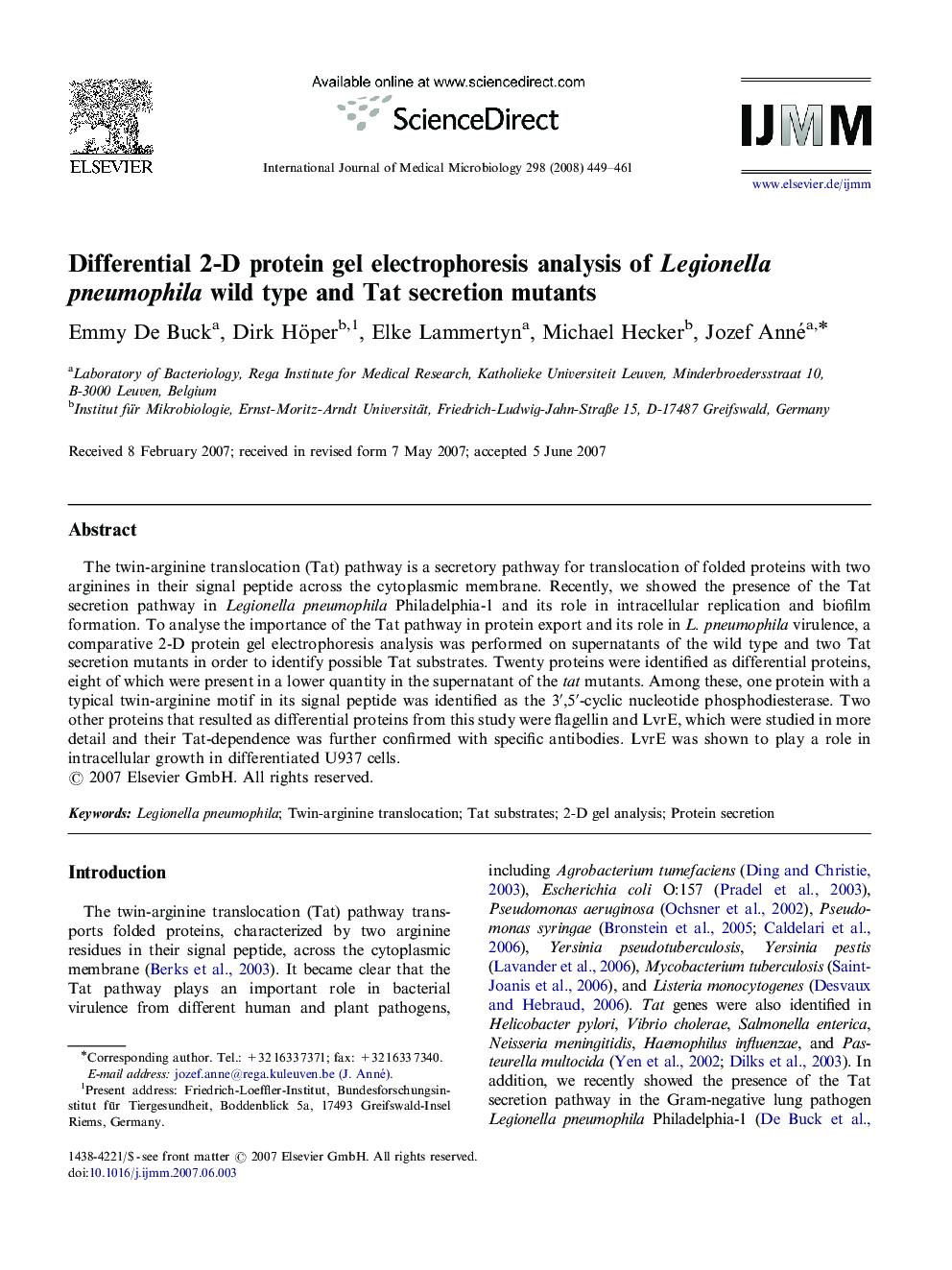| Article ID | Journal | Published Year | Pages | File Type |
|---|---|---|---|---|
| 2054352 | International Journal of Medical Microbiology | 2008 | 13 Pages |
The twin-arginine translocation (Tat) pathway is a secretory pathway for translocation of folded proteins with two arginines in their signal peptide across the cytoplasmic membrane. Recently, we showed the presence of the Tat secretion pathway in Legionella pneumophila Philadelphia-1 and its role in intracellular replication and biofilm formation. To analyse the importance of the Tat pathway in protein export and its role in L. pneumophila virulence, a comparative 2-D protein gel electrophoresis analysis was performed on supernatants of the wild type and two Tat secretion mutants in order to identify possible Tat substrates. Twenty proteins were identified as differential proteins, eight of which were present in a lower quantity in the supernatant of the tat mutants. Among these, one protein with a typical twin-arginine motif in its signal peptide was identified as the 3′,5′-cyclic nucleotide phosphodiesterase. Two other proteins that resulted as differential proteins from this study were flagellin and LvrE, which were studied in more detail and their Tat-dependence was further confirmed with specific antibodies. LvrE was shown to play a role in intracellular growth in differentiated U937 cells.
